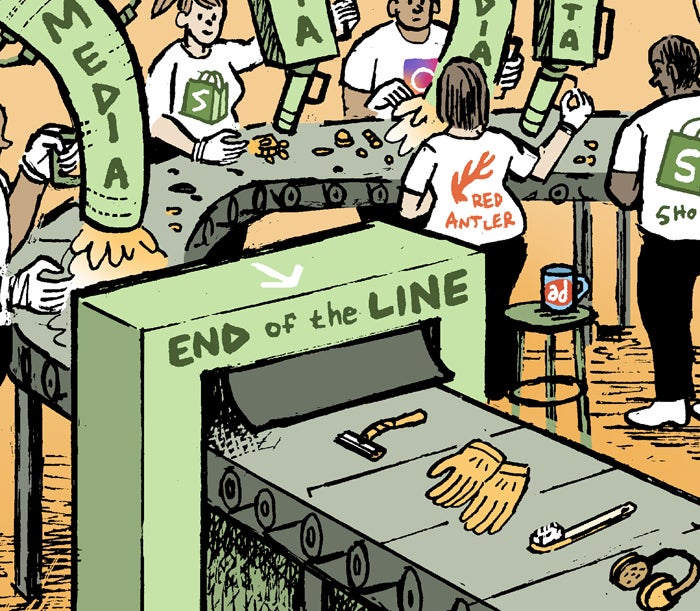Here’s today’s AdExchanger.com news round-up… Want it by email? Sign up here.
Can You Walk The Walk?
Nike is accustomed to being a business school case study for big strategic wins.
How it stole Hollywood, for instance (find a movie with Converse sneakers), or the NBA or marathoners or streetwear style, etc.
But Nike has also stumbled. Like when it made a big bet on going direct to consumers and using first-party data to drive its business. Now, though, as its new CEO prepares to take over, Nike is walking back those plans, Digiday reports.
Not that it’s ditching first-party data, but the company is trying to get back some of the shelf space it ditched when it decided to sell exclusively on Nike’s site or stores. Some retailers were peeved by Nike loudly ditching them, and others filled the space with brands like Hoka and On, and perhaps have sold as well or better.
And Nike isn’t just reverting back to retail distribution from almost all DTC. It’s also returning to its former mode of brand marketing and storytelling, rather than being caught up in the short-term optimization games of online first-party data.
Short Stuff
In 2021 and 2022, TikTok video lengths began creeping up from 15 seconds max to a three-minute cap and then 10 minutes, where it still stands. This was to compete with YouTube.
At the same time, YouTube launched Shorts, its home for TikTok pos … I mean, for six-second vertical videos.
It’s fitting that YouTube Shorts are now yo-yo-ing back. Starting next week, users will be able to post YouTube Shorts as long as three minutes, Mashable reports.
Advertisers benefit, too, since they’ll have a little more breathing room for their own YouTube Shorts ads. Advertisers need more than a few seconds to make an impact, and it’s uncomfortable when the brand shows up as a longer piece of content within a feed of super-quick organic posts.
Users get a little breathing room as well, because YouTube will allow people to choose to see fewer Shorts.
YouTube has been foisting Shorts posts all over its homepage to generate more quick, viral content and poach attention from TikTok. But Shorts posts don’t monetize effectively (which is why TikTok wants more YouTube-esque long-form video). So now YouTube Shorts will be rationalizing back into … YouTube.
Nice News You’ve Got There
Another digital platform is threatening to withhold news from an entire country, the Wall Street Journal reports.
This time it’s Google, which claims it will stop linking to news articles in New Zealand if lawmakers move forward with a bill requiring digital platforms to pay media outlets.
The move is reminiscent of one made last year, when the Canadian Parliament passed a similar law called the Online News Act. Meta started blocking news articles from appearing on Facebook in response, and it’s had a noticeable impact on how the Canadian populace shares information with each other. (Meta also might enforce a similar ban soon in Australia, which started the legislation trend in the first place.)
Google, meanwhile, eventually reached an agreement with Canada rather than follow in Meta’s footsteps. But New Zealand’s population is significantly smaller than that of the Great White North, and Google’s search platform has almost three times the visitors of Facebook.
So if an agreement can’t be reached, what happens? Does Google effectively cut off 5 million people from being able to look up news? (And, on a more selfish note, what happens if a US state of comparable size passes the same legislation?)
But Wait, There’s More!
Startup funding growth for Q3 is up compared to last year, but much slower compared to Q2. [The Information]
Warner Bros. Discovery’s ad chief Jon Steinlauf to exit later this year. [Ad Age]
TikTok’s got a fast new web scraper that’s making OpenAI’s bot look like a chump. [Quartz]
You’re Hired
The Coalition for Innovative Media Measurement (CIMM) hires Evan Cohen as SVP of projects and strategic initiatives. [Release]











